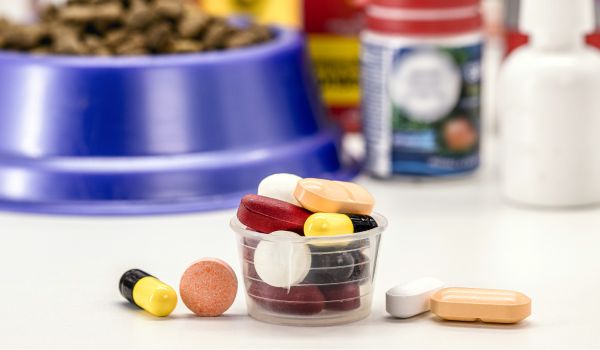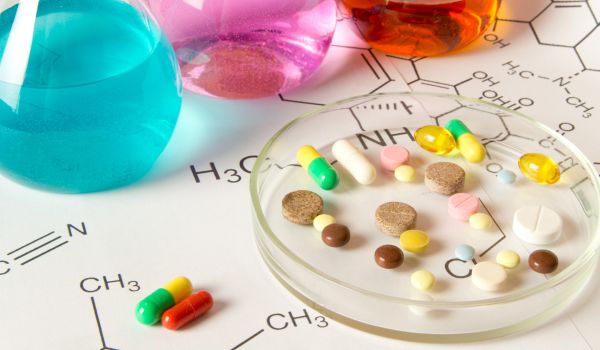The internet has changed our lives, making everything from shopping to socializing just a click away. But the very convenience that makes it so appealing also hides risks that are often underestimated. One such difficult landscape is counterfeit medications and medical devices sold online. As we step into 2024, it’s critical to understand the dangers posed by counterfeit medications, how to recognize them, and steps to take to ensure you’re purchasing authentic and safe products.
Contents
Counterfeit Medications
What Are They?
Counterfeit medications are fake or unauthorized replicas of real medicines. These can range from life-saving drugs like cancer medications to everyday pills like aspirin. These counterfeits are manufactured in non-regulated environments and can contain incorrect dosages, contaminated ingredients, or hazardous materials.
The Risks Involved
The risks of consuming counterfeit medications can be severe, sometimes leading to adverse reactions, treatment failure, or even death. Due to the lack of quality control, these fake medicines often have the wrong active ingredients or dosages, leading to inefficacy or dangerous side effects.
How to Identify Counterfeit Medications?
These days, the anonymity and lack of oversight on the internet make it a fertile ground for counterfeit medications. So, how can one steer clear of these dangerous fakes? Below are some detailed steps to help you identify counterfeit medications.
Check the Packaging
- Spelling Errors: One of the first red flags that can help you spot counterfeit medications is spelling errors on the packaging. Drug manufacturers with reputations to uphold are meticulous about the details, right down to the packaging. Spelling errors are a clear indication of a product that hasn’t gone through rigorous quality control.
- Lack of Information: Reputable pharmaceutical companies provide comprehensive information on the packaging, including dosage, storage conditions, ingredients, and potential side effects. Counterfeit products often lack detailed information or may provide incorrect or misleading details. This can be particularly risky, as it may lead to improper use of the medication.
- Low-Quality Print: The print quality of authentic medication packaging is typically high and consistent. Counterfeit versions might exhibit low-quality print, faded colors, or smudged ink. Such inconsistencies should prompt you to investigate further.
Verify with the Manufacturer
- Lot Number: A lot number is a unique identifier given to a particular batch of medication. You can find this number on the packaging or bottle of legitimate medications. Counterfeit medications often reuse lot numbers or create fake ones. Always validate the lot number by contacting the manufacturer or checking their official website.
- QR Code Scanning: Technological advancements have led some manufacturers to include QR codes on their packaging. Scanning these codes with a smartphone can directly lead you to the product’s information on the manufacturer’s website. This is an easy and quick way to verify the authenticity of a medication.
Consult Your Healthcare Provider
- Seeking Professional Advice: Your healthcare provider should be your go-to resource for anything related to your medication, from the type of medication best suited for you to the dosage and possible side effects. Before purchasing, especially from an online source, consult your healthcare provider to verify that the medication is appropriate for your condition.
- Prescription Verification: In many countries, certain medications require a prescription from a certified healthcare provider. Before fulfilling an online medication order, legitimate pharmacies will ask for this prescription. On the other hand, if an online pharmacy is willing to send you prescription medication without verifying the prescription, it is likely a counterfeit operation.
- Laboratory Testing: In extreme cases where doubt persists, healthcare providers can send samples of the medication for laboratory testing. Although this is not commonly done, it is the most accurate method for determining the medication’s authenticity.
Tips to Stay Safe
- Use Reputable Pharmacies: Choosing to buy from a reputable and accredited pharmacy is your first line of defense against counterfeit products. These pharmacies adhere to strict guidelines and quality control measures, ensuring the medications you receive are genuine and safe. They often require a proper prescription for medications that legally mandate one. Stick to well-known platforms verified by healthcare institutions to minimize risks.
- Look for Certification: An online pharmacy certified by relevant health authorities has undergone vetting to ensure it meets quality and safety standards. These certifications are not just badges; they testify to the pharmacy’s commitment to providing authentic healthcare products. Before purchasing, verify the pharmacy’s certification through the accrediting body’s official website or database.
- Be Skeptical: The allure of an incredible deal can be tempting, but proceed with caution. Counterfeiters often lure victims with offers that seem too good to pass up, like huge discounts or buy-one-get-one-free deals on costly medications. Such unbelievable offers are often a bait-and-switch tactic to sell fake or substandard products. Always cross-reference prices and offers with other reputable sources.
Counterfeit Medical Devices
Counterfeit medical devices, from glucose monitors to surgical equipment, pose an equally significant risk. These fakes can result in incorrect diagnoses, surgical complications, and other medical mishaps. The worst part is, because they mimic authentic devices so closely, they’re often hard to identify until it’s too late.
Ways to Spot Them
- Check Documentation: Authentic medical devices come complete with thorough user guides and necessary certification. These documents often contain detailed instructions, safety guidelines, and sometimes even troubleshooting steps. A lack of documentation or sketchy, incomplete guides can signal you’re dealing with a counterfeit product.
- Price Point: An unusually low price for a medical device should immediately raise red flags. Genuine medical devices, produced under strict quality controls, usually have a standardized price range. Significant deviations from this range often indicate a counterfeit or substandard product.
- Software Interface: Be wary if a medical device has outdated, glitch-prone software or seems off. Legitimate medical devices typically feature well-designed, user-friendly software that receives regular updates for security and functionality. Counterfeit devices often fail in this aspect, which can be a strong clue about their illegitimacy.
You can safeguard against counterfeit devices by:
- Avoiding third-party sellers when purchasing medical devices.
- Reading online reviews and forums to confirm the credibility of the product and seller.
- Reporting helps authorities take action and prevents further risks.
Counterfeit Pet Medications
Counterfeit pet medications are also rising, posing severe health risks to our furry friends. From heartworm pills to flea collars, these fake medications can be ineffective at best and lethal at worst.
How to Identify and Stay Safe from Counterfeit Pet Medications
- Examine the Product: Counterfeit pet medications often have inconsistencies in packaging and presentation. For example, authentic medications may come in a tamper-evident package, while counterfeits may lack this feature. Look for irregularities like varying pill sizes or colors, smudged labels, or missing safety seals, which may indicate a counterfeit product.
- Verify with the Vet: Before administering any new medication to your pet, always consult your veterinarian. Your vet can provide accurate information about proper dosages, potential side effects, and the efficacy of the medication. This is a crucial step for the safety of your pet.
- Check Online Pharmacies: Just like human medications, ensure you use a reputable and accredited online pet pharmacy. Check for accreditations or certifications and read customer reviews to gauge the pharmacy’s reliability.
Counterfeit HIV Medication
Perhaps the most alarming of all are counterfeit HIV medications. These fraudulent medicines compromise the health of those who rely on consistent and effective treatment, potentially leading to treatment failure and an increase in drug-resistant strains of the virus.
How to Stay Safe
Here is how you can stay safe from counterfeit HIV medication:
- Regular consultations with your doctor can help ensure you are getting the correct medication.
- Always cross-check online sellers through accredited lists provided by healthcare organizations.
- Report any suspected counterfeit HIV medications to authorities immediately. Numerous platforms exist for this, such as the FDA’s MedWatch in the United States.
The online world is fraught with risks, but with the right knowledge, you can protect yourself and your loved ones. Always be cautious when purchasing medications and medical devices, especially online, and consult professionals whenever in doubt. The convenience of online shopping should never compromise the health and well-being of you or your family.
Conclusion
As we embrace the digital age, the convenience of online shopping comes with its own risks, especially regarding healthcare. Counterfeit medications and medical devices are more than just a financial scam; they pose serious health risks that can result in irreversible damage or even loss of life. As we move forward into 2024, being educated and vigilant is our best defense. Always consult with healthcare providers, verify sources, and prioritize buying from accredited platforms. The stakes are high, but your health and safety are worth every precaution.









